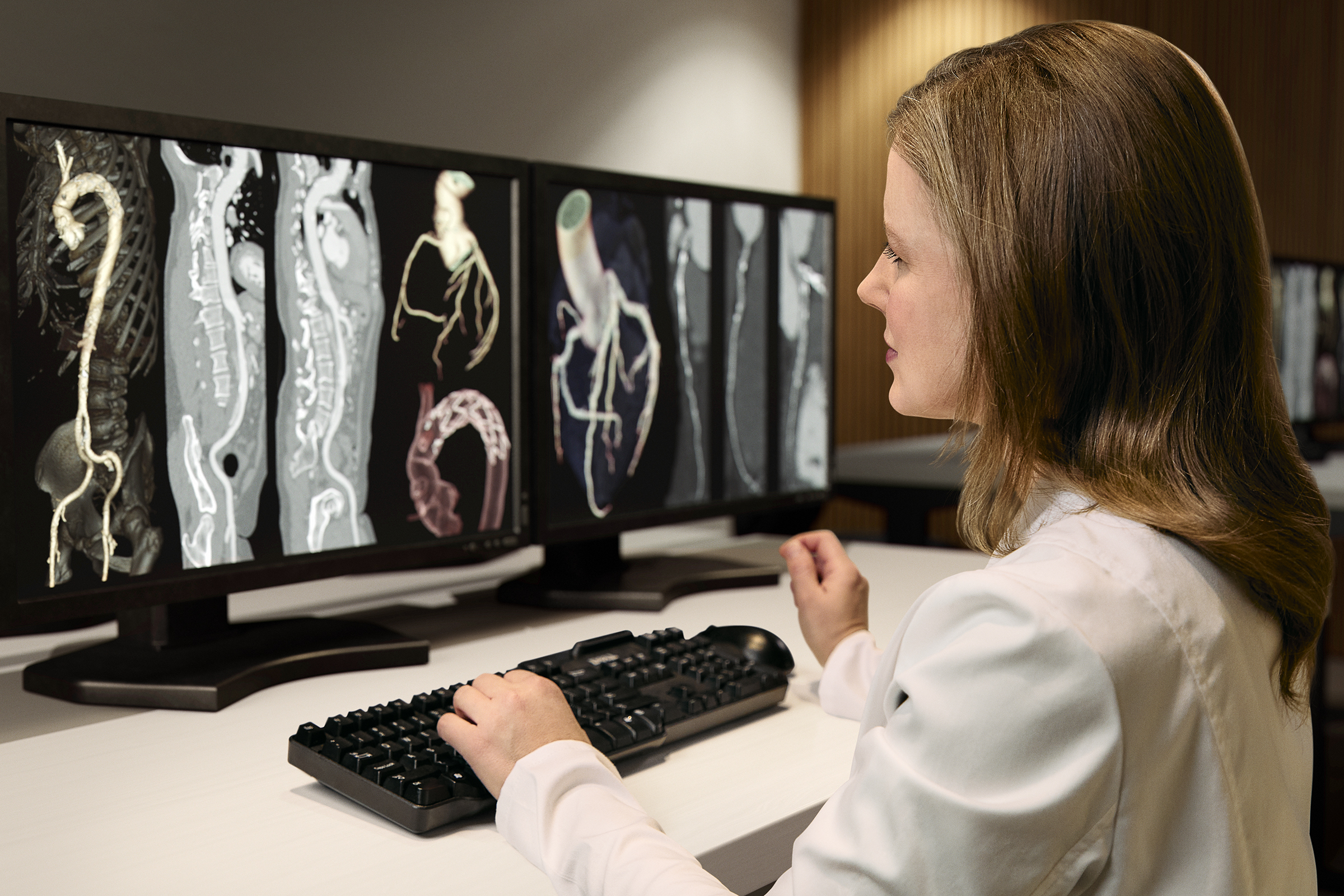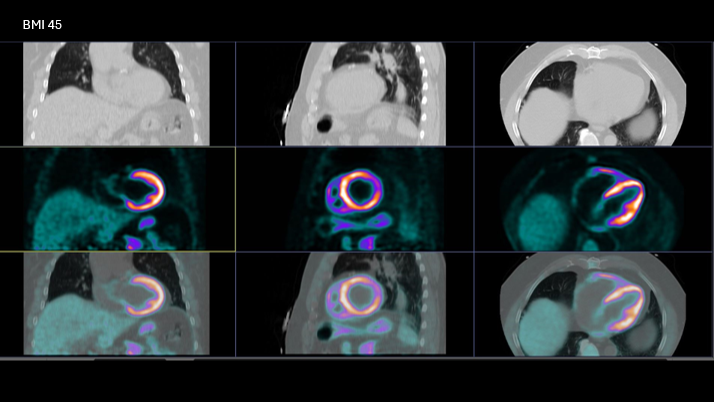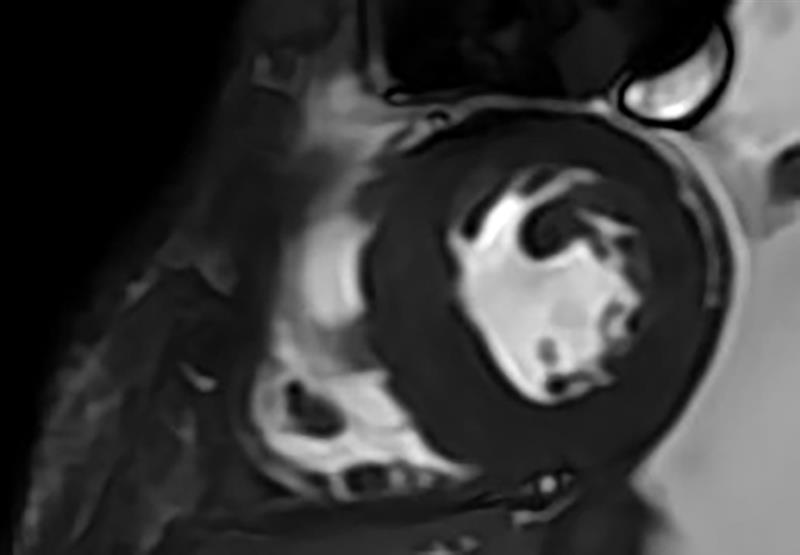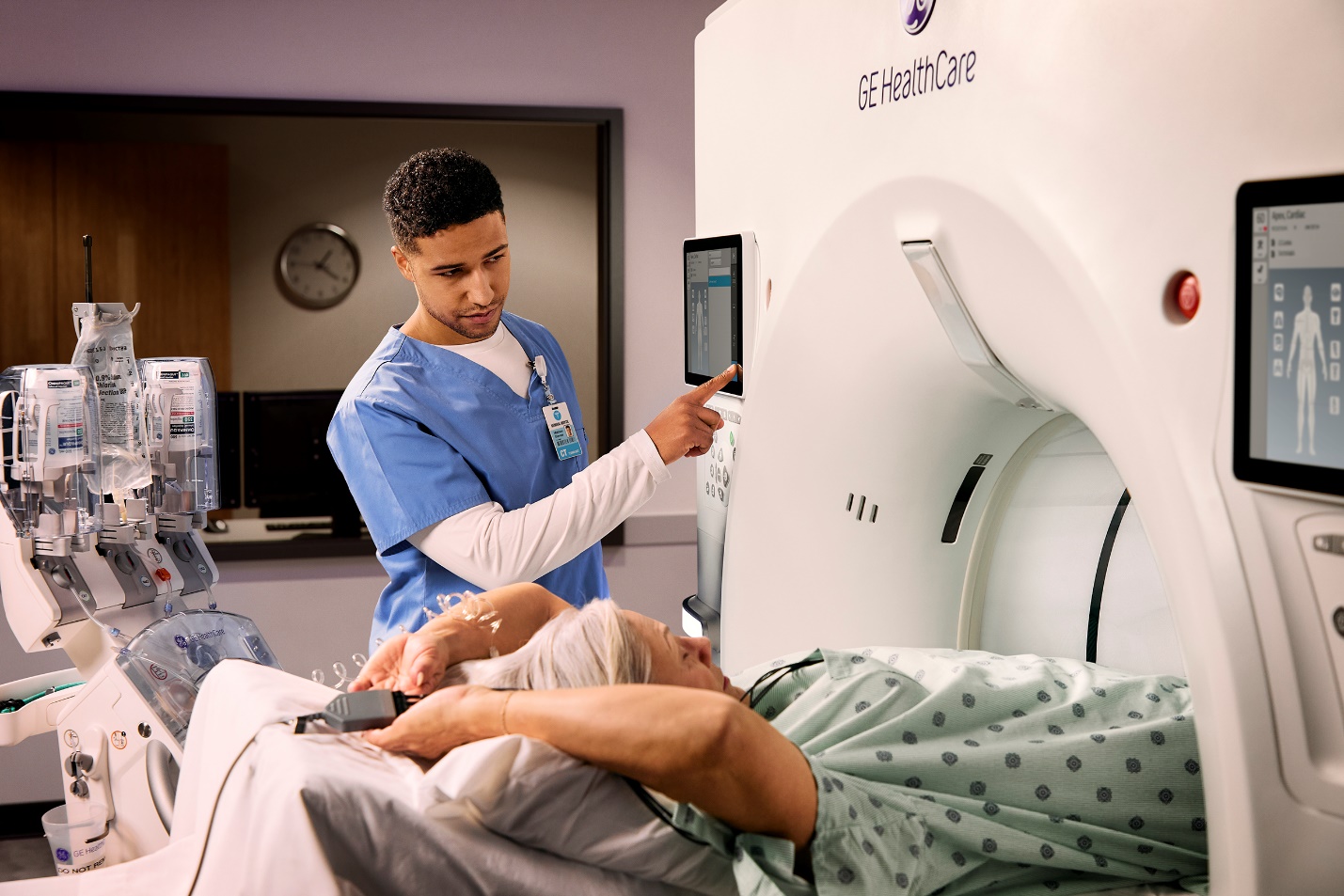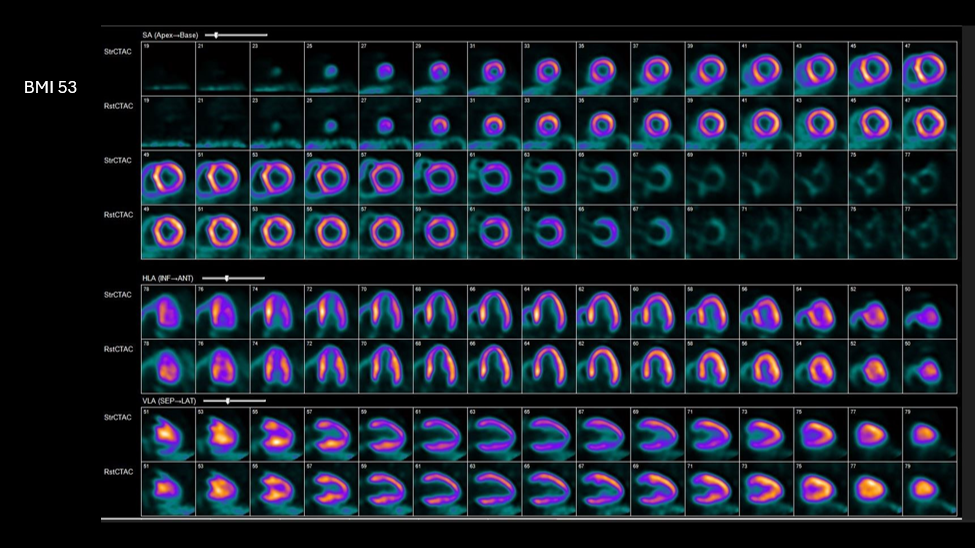By Peter Arduini, President and CEO, GE HealthCare
Cardiac PET MPI images showing myocardial perfusion in a high BMI patient, helping assess heart function and identify potential areas of reduced blood flow.
The field of cardiology is undergoing a remarkable transformation.
In the last few years, we’ve seen more progress to advance cardiac care than we’ve seen in decades – and it’s about time.
Tic Toc went the clock
10 years ago, Apple launched the smartest watch the world had ever seen with features that could track workouts and heart rates, pay bills and send calls from the convenience of our wrists. For many consumers, once they got their hands on it, there was no turning back. Even traditionalists, like me, who prefer to wear the wristwatch day-to-day, are turning in their timekeepers - at times - for the more modern minicomputer to be more productive, and healthy.
Since then, smartwatches have not only stood the test of time but have transcended it with FDA cleared AI-powered algorithms that can detect signs of a cardiac emergency like a lack of pulse and motion and automatically seek assistance for emergency responders. In these scenarios, reducing the time between a life-threatening episode and intervention can significantly improve outcomes and result in the most precious gift of all for the patient – more quality time.
The imaging boom
Sonic DL deep learning acceleration for cardiac MR enables diagnostic quality exams to be completed without breath holds making the MR procedures accessible to even the sickest patients.
By far, the biggest boom in cardiac care in the last decade has been in medical imaging, particularly when combined with AI.
A recent analysis in The Journal of the Society for Cardiovascular Angiography & Interventions examined the growing trend of AI in cardiovascular imaging and interventional cardiology. Elazer R. Edelman, MD, PhD, the Edward J. Poitras Professor in Medical Engineering and Science at MIT, a Professor of Medicine at Harvard Medical School, and a cardiac intensive care unit cardiologist at the Brigham and Women’s Hospital, who co-authored the report, described the impact of AI on interventional cardiology as profound as it relates to image processing and diagnostic support to risk assessment and procedural decision-making. He said, “AI has the power to enhance precision, improve outcomes, and democratize expertise across the field.”
At GE HealthCare, we are evolving from an imaging provider to a healthcare solutions provider focused on delivering precision care by creating smart devices and drugs, tied to disease states, like coronary artery disease or atrial fibrillation, across the patient journey, and enabled by AI. We call this our D3 strategy, and it’s how we distinctly help clinicians deliver cardiac care that’s more personal and precise.
According to a new analysis published in Circulation: Cardiovascular Imaging, diagnostic testing for cardiac diseases is moving from invasive angiography and traditional stress testing toward cardiac MR, PET,[i] and cardiac CT angiography (CCTA), a quick, non-invasive test that uses a specialized CT scanner to obtain high-resolution three-dimensional images capable of providing high-risk patients like Thomas Pfaus, a filmmaker from Germany, who lost both parents to CVD, an inside view of his heart and peace of mind. After a 10-mintue CCTA scan, Pfaus learned he had some plaque in his arteries, but nothing overly concerning.
In 2021, The American College of Cardiology (ACC), the American Heart Association (AHA) and The European Society of Cardiology (ESC) updated their guidelines to recommended CCTA as a first-line investigation for patients with chest pain, and this year, a new payment policy went into effect in the U.S. that more than doubled Medicare reimbursements hospitals receive for performing CCTA. Because of this, and other advancements in technology, the exam is becoming one of the fastest growing of all cardiac imaging tests and is expected to surge in the coming years.
Over the last few years, GE HealthCare has allocated increased R&D to invest in enhancing imaging capabilities across these modalities by providing advanced AI-powered capabilities that can help cardiologists identify diseases sooner, improve accuracy, and decrease exam times while enabling better patient outcomes. We recently unveiled Revolution™ Vibe,[ii] an ‘all in one’ system for CCTA that delivers high-quality images for patients, even in challenging cases like atrial fibrillation and heavily calcified coronaries, powered by AI to enable fast, accurate diagnoses, a more comfortable patient experience, and more efficient workflows.
As cardiovascular disease (CVD) continues to rise globally, the need for advanced diagnostic technologies like cardiac CT angiography (CCTA) becomes increasingly critical. Revolution ™ Vibe [iii] is a new computed tomography (CT) system with Unlimited One-Beat Cardiac imaging to deliver consistent, high-quality images for patients, even in challenging cases like atrial fibrillation and heavily calcified coronaries.
Time is on your side, yes, it is
With all the focus on reducing time – whether it be for a scan or an intervention - one of the innovations I’m most excited about optimizes time in a new way helping to overcome the short half-life challenges associated with existing PET myocardial perfusion tracers used to diagnose patients with known or suspected coronary artery disease (CAD).
Rest and stress PET MPI images of a patient with a body mass index of 53, highlighting differences in myocardial perfusion and assessing heart function under varying conditions of stress.
GE HealthCare’s Flyrcado™ (flurpiridaz F 18) injection’s half-life, the time it takes for the radioactive atoms in a sample to decay, is significantly longer than existing PET MPI tracers —removing the need for U.S. hospitals and healthcare facilities to have on-site tracer production and generator maintenance and enabling distribution to a wide network of hospitals and imaging centers. As a result, Flyrcado, referred to as a “game-changer” by a principal investigator during its clinical trials, may drive broader access to PET MPI.
After 15 years in development, we’re excited to share that the time has come for our commercial launch of Flyrcado, which is now available in select U.S. markets.
Resources:
- NIH PubMed: Smartwatches in healthcare medicine: assistance and monitoring; a scoping review
- Cardiovascular Business: Key trends in diagnostic heart testing: CT on the rise as some traditional techniques fall out of favor
- AHA|ASA Journals: Temporal Trends in Noninvasive and Invasive Cardiac Testing From 2010 to 2022 in the US Medicare Population
[i] Yosef A. Cohen, MD, Luca Bremner, BA, Mrinali Shetty, MD, et al. Temporal Trends in Noninvasive and Invasive Cardiac Testing From 2010 to 2022 in the US Medicare Population. Circulation: Cardiovascular Imaging. March 13, 2025.

